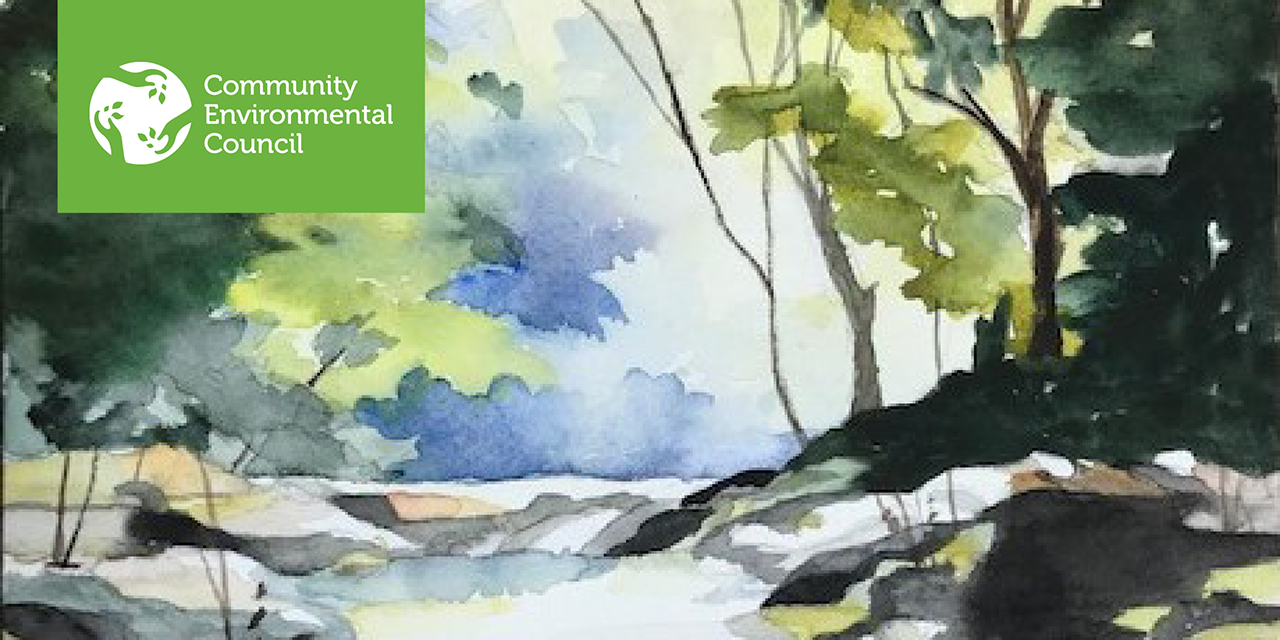| Hello,
Rising temperatures, prolonged droughts, and extreme weather events are driving the severity and frequency of wildfires. So far this year, California has had more than 7,000 wildfires — including our region’s recent Lake and Mountain Fire — that have ravaged a million acres, destroying homes and communities, impacting air quality, and releasing massive amounts of pollution into the atmosphere. Every one of these fires represents a setback to carbon reduction efforts.
But we have the collective power to stop this climate chaos.
The Community Environmental Council recognized early on that the California Central Coast provides the perfect climate lab to test solutions that can protect our and other regions from future fires. The good news is our solutions are working. We are:
- Convening fire officials, policy experts, researchers, and residents at our Environmental Hub to discuss how Central Coast communities can advance and integrate innovative adaptive strategies to better live with fire.
- Helping pass bold climate policies like California Senate Bill 675 to make it easier for fire agencies, ranchers, and land stewards to utilize managed grazing for wildfire prevention, carbon capture, and ecological health.
- Establishing community resilience hubs and toolkits to empower communities to provide shelter and resources during a wildfire or other climate disaster.
- Working with our Santa Barbara County Wildfire Resilience Collaborative partners to plan and build capacity for wildfire resilience and habitat restoration projects.
- Monitoring air quality in frontline communities through the Guadalupe Community Air Project to provide data, bilingual resources, and opportunities for community-led discourse and action on wildfire smoke and health.
With your support, we can continue to innovate, pilot, and scale up real-life solutions that build resilience to wildfires, smoke, and other extreme weather impacts.
CEC has what it takes. Are you with us?
Donate or join our Livable World Legacy Society today and be part of the community of generous and visionary donors who are ensuring a climate-resilient future for generations to come.
Onward,
Em Johnson
Director of Climate Programs
FEATURED LEGACY DONOR
Michel Saint-Sulpice: A Man in Love—With Gaia
 Michel Saint-Sulpice is the embodiment of an environmental steward. He is profoundly in love with the earth and all the living things that make up the web of life that sustains us all. This love governs his life and the exemplary way in which he lives it. Michel Saint-Sulpice is the embodiment of an environmental steward. He is profoundly in love with the earth and all the living things that make up the web of life that sustains us all. This love governs his life and the exemplary way in which he lives it.
Michel was born in Grenoble, France, into a family of artists and architects. He grew up partly in the city and partly in a small rural village in the Alps, where his father would frequently take him on Sunday walks into the mountains. These experiences were part of the early fuel that energized him. He studied architecture at the University of Grenoble and moved to New York in his 20s.
It was in New York, in 1970, that he encountered another spark that lit his environmental passion: the first Earth Day. Attending Earth Day opened his eyes to just how badly we were abusing our planet and its living creatures and how urgently we needed to change our ways—for the good of the planet and for our own good.
Read the full story.
Read more donor stories.
Receive tax benefits for your year-end donation
If you are 70½ years of age or older, you can transfer up to $100,000 from your IRA to the Community Environmental Council (CEC) as a charitable gift, reducing taxable income and satisfying your required minimum distribution (RMD) for the year.
Known as Qualified Charitable Distributions, these IRA donations are tax-free and give CEC the full value of the contribution. They’re a popular choice for many CEC donors. Contact your IRA administrator for the necessary form.
Not 70½? Share this option with eligible family and friends for a tax-free IRA withdrawal through a Charitable Rollover.
|

